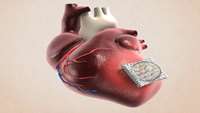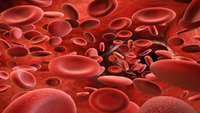New stem cell model to study how cancer arises
In an interdisciplinary study combining stem cell biology and tumor biology, researchers from Karolinska Institutet (as well as Uppsala and Lund University, together with researchers in Canada, Germany and France), have succeeded in creating a new type of stem cell model for studies on cancer of the brain. The study was recently published in PNAS.
Cell infusions benefit heart patients
More than three years after a clinical trial was prematurely ended for failing to show progress in healing heart attack scars, a prominent peer-reviewed journal is publishing some surprising results showing that the heart cell treatment does benefit patients.
New 3-D-printed artery can monitor blockages from the inside
When surgeons replace part of a blood vessel—something they do in 450,000 patients per year in the United States to treat blood clots, coronary disease, stroke damage and more—the grafted vessel is monitored by CT scans, ultrasounds and other expensive imaging techniques. Despite all that effort, between 40% and 50% of those grafts fail.
Epigenetics key to daily production of 10 billion blood cells without mistakes
Just one in 2,000 bone marrow cells are hematopoietic stem cells (HSC), but these are the source of the ten billion blood cells humans make every day. In a new study published today, researchers from the Centre for Genomic Regulation (CRG), in Barcelona, show that the epigenetic regulator Phf19 is essential for HSC differentiation, and in its absence blood tissue is imbalanced and equivalent to what naturally occurs with aging.
Animal study shows human brain cells repair damage in multiple sclerosis
A new study shows that when specific human brain cells are transplanted into animal models of multiple sclerosis and other white matter diseases, the cells repair damage and restore function. The study provides one of the final pieces of scientific evidence necessary to advance this treatment strategy to clinical trials.
Correlation between the efficacy of stem cell therapy for osteonecrosis of the femoral head and cell viability
Osteonecrosis of the femoral head (ONFH) is a common disease that greatly affects the quality of life of patients. Repair of the necrotic area is key to successful treatment. Currently, the combination of stem cell transplantation and decompression is used clinically to promote the repair of necrotic areas based on the characteristics of stem cells
Organoids help bridge gap between laboratory study and animal modeling of colorectal cancer
Scientists at the Wake Forest Institute for Regenerative Medicine (WFIRM) have biofabricated human colorectal cancer miniature organs, called organoids, to better understand how a tumor grows in its natural microenvironment and its response to therapies.
Researchers discover stem cells in the optic nerve that enable preservation of vision
Researchers at the University of Maryland School of Medicine (UMSOM) have for the first time identified stem cells in the region of the optic nerve, which transmits signals from the eye to the brain.
Studying the Neandertal DNA found in modern humans using stem cells and organoids
Protocols that allow the transformation of human induced pluripotent stem cell (iPSC) lines into organoids have changed the way scientists can study developmental processes and enable them to decipher the interplay between genes and tissue formation, particularly for organs where primary tissue is not available.
COVID-19 cytokine storm: Possible mechanism for the deadly respiratory syndrome
Research into how the SARS-CoV-2 virus induces death is suggesting potential treatments for its most destructive complications.












